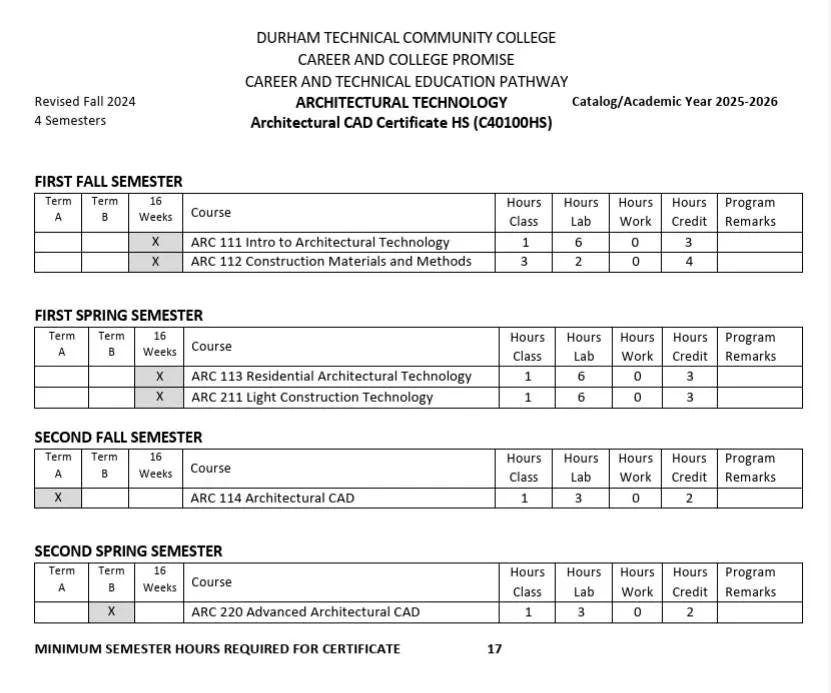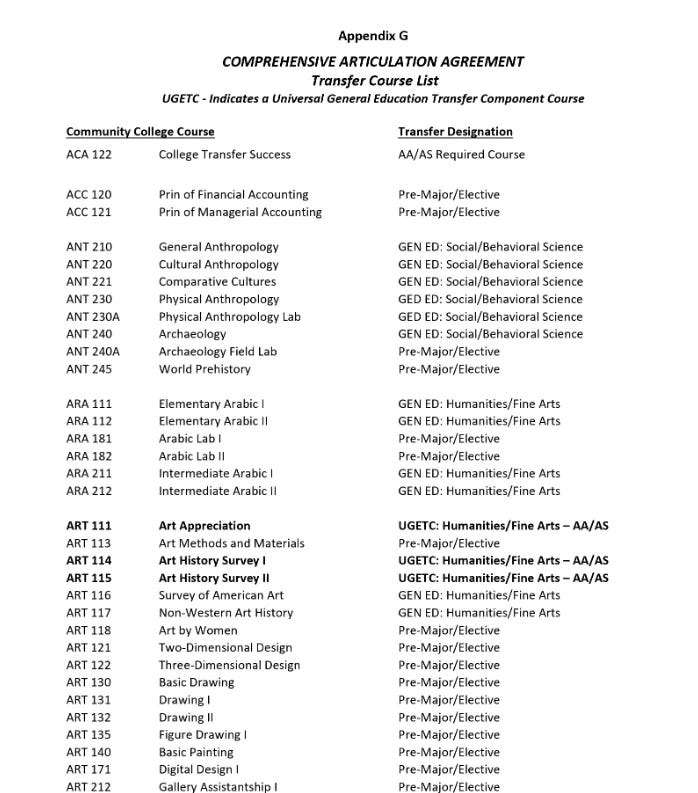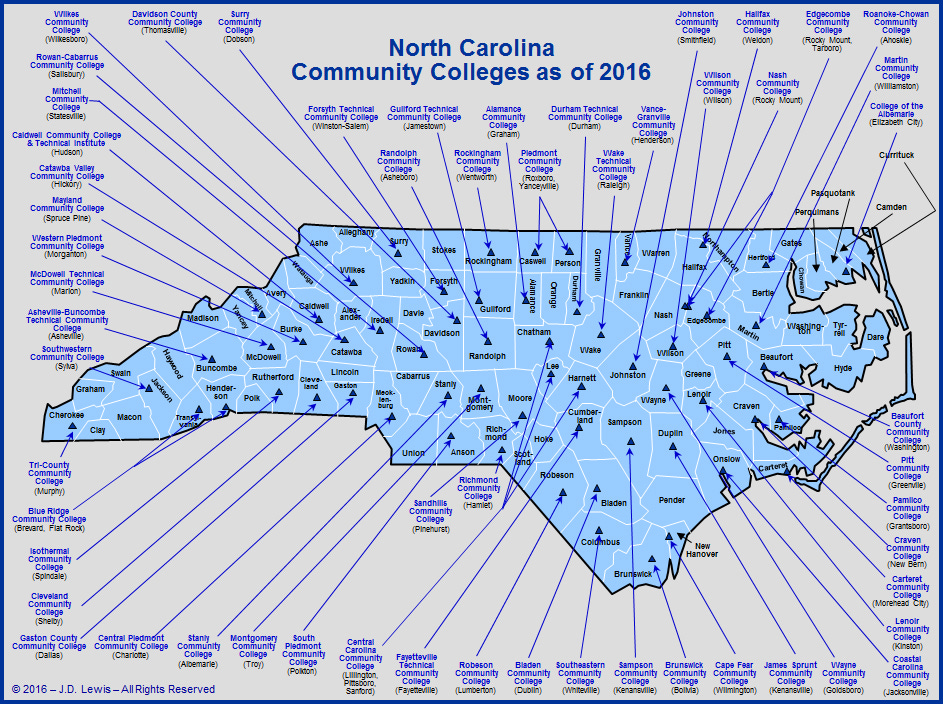How North Carolina Punished My 16 Year Old for Studying Architecture
A personal story shows how local education policies actively discourage kids from pursuing rigorous careers in housing
North Carolina’s “Dual Enrollment” is a statewide program that encourages high school students to take college classes for college AP credit. And it’s really good. It’s generally well organized, has a huge list of class options, and allows students as young as 13 and 14 to pursue interests that the K-12 system cannot serve.
One of those students is my daughter, a straight-A 16-year-old with a stubborn determination to study architecture. Earlier this year, while taking a college-level drafting course through Dual Enrollment, she came up against a problem with the program—one that ended up seriously shortchanging her.
The issue is a state policy flaw obscured in red tape and fine print, so let me explain a bit.
THE STATE’S POLICY ON ARCHITECTURE IS INACCURATE
My daughter is deep into the Dual Enrollment program. She is on pace to earn her Architectural Technology Certificate (below) before graduating from high school. She took two Architecture courses in the fall, two more this spring, and is scheduled for at least two more next year.
She’d been told that:
All classes in the dual enrollment program qualify for Advanced Placement (AP) +1 bonus points—thus, an A counts for a 5.0 grade point rather than a 4.0; and that
All classes that qualify for college credit are governed by the Comprehensive Articulation Agreement (CAA), a list of ~500 courses that 4-year colleges in North Carolina accept for college credit.
Neither of these two claims, put forth as fact by North Carolina’s education systems, proved accurate.

Instead, here’s what is actually true:
NOT ALL DUAL ENROLLMENT CLASSES QUALIFY FOR COLLEGE CREDIT. My daughter, who has never received lower than an A, was devastated in January when her updated transcript showed that her GPA and class rank had plummeted—because she got two As in Architecture classes at Durham Tech. Unbeknownst to her, those classes weren’t on the CAA list, so the As counted as 4.0s, not 5.0s. And, because she was taking extra classes—five instead of the usual four at Riverside High—her GPA dropped even further.
THE STATE’S PRIMARY POLICY DOCUMENT IS WRONG. The CAA is presented as a definitive list of what UNC system schools will accept for credit, but that’s not how it works in practice. Through extensive research and outreach to the state, we documented that the architecture classes in question are, in fact, accepted for credit at UNC-Greensboro, East Carolina, UNC Charlotte, Appalachian State, and others. (See below.)
Beyond the policy discrepancy, it’s clear from other professionals in the state that the coursework is college-level. Jenn Truman—twice degreed at NC State in Architecture and Civil Engineering—said that:
“I have reviewed the technical drawings [your daughter] completed in ARC 113, and they are absolutely college-level. Her drawing is excellent, and it exceeds what most NCSU Architecture students would be capable of in their freshman year.”
Thus, my daughter has two complaints. First, the administrators of Dual Enrollment need to be more careful and precise in conveying which classes qualify for college credit and which do not. Second, the schools need to 1) recognize the discrepancies with the CAA as an error, 2) take responsibility for the error, and 3) correct it on a system-wide scale so that other students aren’t penalized like my daughter has been.
REMEDY
In the end, my daughter will be fine. But like any student who is genuinely trying to better themselves while navigating the increasingly ruthless college admissions landscape, she never would have enrolled in those classes had she known how severely they would hurt her GPA and class standing. That may not matter for getting into many schools—but for places like UC Berkeley, Notre Dame, or NC State, it just might.
At the bottom line, this is a major truth-in-advertising issue.
My daughter’s remedy and relief process with the state has been frustrating. North Carolina has three major education systems: the Department of Public Instruction (K-12), The Community College System, and the UNC-System (4-year colleges). On this issue, DPI has deferred to the state systems. The state systems have referred to DPI. And, you guessed it, at this point, DPI referred it back to the state.
Everyone agrees that something is amiss here: the CAA does not match the clear and present policies of the UNC-System member universities, but no one is taking responsibility for fixing it.
By passing the buck, these systems are telling my daughter “This is YOUR problem, not ours.”
Architecture appears to be the only subject that both qualifies for college credit and is not on the CAA. This discrepancy proves that it’s a policy error.
With the exception of architecture, it appears that all other community college coursework is fully bifurcated into either:
Classes that do quality for college credit and are on the CAA (Spanish, Calculus, Art, History etc.). OR
Classes that do not qualify for college credit and are not on the CAA (Plumbing, realtor' license, firefighter training)
After the Community College System referred my daughter to DPI Academic Affairs, DPI responded by saying that the only way to fix the issue is to find one community college and one four-year university willing to jointly sponsor the change.
Telling my daughter—and her family—that we need to simultaneously align two major state institutions just to correct a technical policy error is like asking us to design and deploy a Patriot missile system—and get it operational in a few months. Given how slow and bureaucratic higher ed institutions are, this feels less like a solution and more like a polite way of telling us to buzz off.
But we won’t be discouraged so easily. In my work on policy reform, I’m used to working with non-responsive, responsibility-deflecting agencies. What could (and should) be fixed with a simple technical correction is now going to waste a helluva lot of important people’s time. Unfortunately, this reflects a familiar pattern with how things get done in North Carolina: even the most reasonable, clear-cut fixes get bogged down, not because they’re hard, but because we seem structurally incapable of doing the simple and right thing in a timely way.
THE FIX ISN’T ABOUT US ANYMORE
Any fix will almost certainly be too late for my daughter. We’ve been fighting this for 5 months, and she starts college applications this summer. At this point, the fight is for other kids who will pursue Architecture studies in North Carolina.
She feels strongly that she was wronged, and that others should not be, so we continue the fight.
Even setting aside my personal connection to this story, I feel strongly as a housing advocate in North Carolina: the state should not be in the business of discouraging students from pursuing a field so clearly tied to solving our housing crisis.
Not only is the Architecture coursework at Durham Tech clearly college-level, but the field itself requires a five-year professional degree—longer and more intensive than most undergraduate programs. In many ways, it’s more college than college.
I hope the state comes to recognize how essential the study of Architecture is, how valuable its Dual Enrollment program can be, how serious this policy failure was, and how the inability to fix it in a timely, transparent way has tarnished the program and undermined trust in its leadership.
The next generation of students deserves better.










She wouldn’t have enrolled had she known. Amazing that education policy can slow the progress of ambitious students. Sad.
If you'd like for me to dissuade her from the architecture field, please let me know. It's a service I routinely perform.